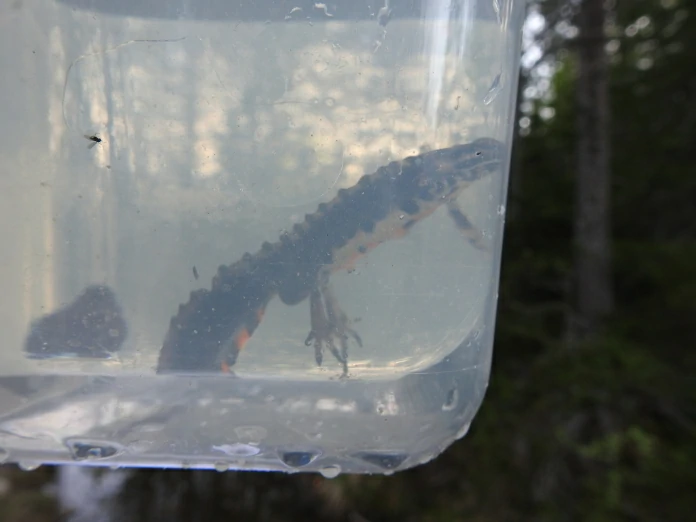If you’re thinking about setting up a tank with different amphibians, you might wonder if newts and frogs can share the same space. They both live in similar places in the wild and look like they’d get along fine. But can newts and frogs actually live together?
Newts and frogs can technically live together, but it’s not a good idea. They have different care needs, can spread diseases to each other, and may compete for food or get aggressive. Even though they sometimes share ponds in the wild, keeping them together in a tank creates stress and health risks for both animals.
What works in nature doesn’t always work in a small tank. Wild ponds give these animals space to avoid each other, but tanks don’t offer that freedom.
Why Mixing Species Is Risky
When you put different amphibian species together, you’re taking a gamble with their health.
Mixing different species of amphibians and reptiles creates problems most people don’t think about until it’s too late.
The biggest issue is disease. Both newts and frogs can carry bacteria, fungi, and parasites that don’t bother them but can make the other species sick.
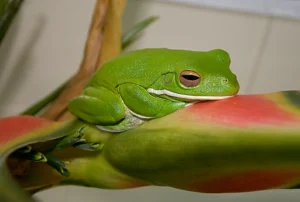
When you put them in one tank, you’re forcing them to share every germ.
Stress is another big problem. Even if they don’t fight, just being near each other can stress them out.
Stress weakens their immune systems, making them more likely to get sick from germs they’d normally fight off.
Newts and Frogs Have Different Environmental Needs
Newts and frogs don’t need the same type of home. Most newts are fully aquatic or spend most of their time in water.
They need deep water with proper filtration and cool temperatures.
Many popular pet frogs, like tree frogs or dart frogs, need mostly land with high humidity. They want branches to climb and leaves to hide under.
Some frogs do live in water, but even aquatic frogs have different needs than newts.

Water temperature matters too. Newts do best in cooler water, usually between 60 and 70 degrees Fahrenheit.
Many frogs like it warmer. If you try to compromise, both animals end up uncomfortable.
The water itself can be a problem. Newts need clean, filtered water with no chlorine.
Some frogs are more sensitive to water quality than others, and what works for a newt might make a frog sick.
Newts and Frogs May Compete For Food
Both newts and frogs are predators that eat live food. When you put them together, they compete for the same meals.
The bigger or faster animal usually gets most of the food, while the other one goes hungry.
Some frogs are aggressive eaters and will attack anything that moves, including newts.
Larger frogs might even try to eat smaller newts, especially if they’re hungry. On the flip side, some newts will bite frogs that get too close.
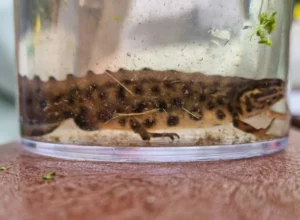
Even if they don’t fight over food, feeding time gets stressful. You have to make sure both animals are eating enough without overfeeding the tank.
It’s much easier to manage when you only have one species to worry about.
There Is Risk of Disease and Parasites Spreading
Amphibians can carry Salmonella bacteria and other germs in their digestive systems without showing any sickness. When you mix species, you increase the chance of spreading these bacteria.
Fungal infections are another worry. Saprolegniasis is a water mold that affects newts and aquatic frogs.
If one animal gets sick, it can easily spread to the other in a shared tank.
Parasites can move between species too. A parasite that doesn’t bother a newt much might seriously harm a frog, and the other way around.
You won’t notice a problem until one of your animals starts showing signs.
Even if both animals look healthy, they could be carrying germs that only show up under stress. And guess what? Living with another species creates stress.
Small Spaces Can Stress the Animals
In the wild, newts and frogs sometimes share the same pond. But wild ponds are huge compared to home tanks.
If a newt wants to avoid a frog in nature, it can swim to the other side of the pond or hide in thick plants.
Your tank doesn’t give that kind of space. Even a large aquarium is tiny compared to a natural pond.
The animals can’t truly get away from each other, which means constant stress.
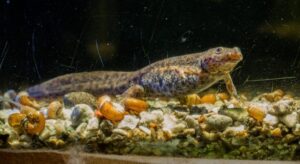
This stress builds up over time. At first, everything might seem fine. Both animals eat, swim around, and look healthy.
But chronic stress weakens them slowly, and after a few months, you might notice one or both starting to get sick or lose weight.
Does Size Difference Matter?
If you’re thinking about mixing newts and frogs because they’re both small, think again. Size differences create big problems in mixed-species tanks.
A large frog might see a small newt as food. Frogs don’t think about whether something is safe to eat, they just react to movement.
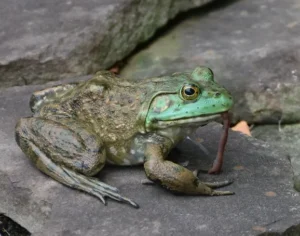
If a newt is small enough to fit in a frog’s mouth, the frog might try to eat it.
Even if the size difference goes the other way, it’s still a problem. Some newts are more aggressive than others, and a large newt might bother a smaller frog.
Nipping, chasing, and territorial behavior can all happen.
The safest approach is keeping species separate, no matter what their sizes are.
Newts and Frogs May Be Active at Different Times
Newts and frogs aren’t active at the same times. Many newts are more active during the day, while lots of frogs are most active at night.
This might sound good, they’d avoid each other naturally, right?
But it actually causes more problems. When one animal is trying to sleep and the other is moving, splashing, and hunting, it disturbs both of them.
Good sleep is important for amphibians, just like it is for humans.
Breeding behavior adds another layer of complication. When newts or frogs are ready to breed, they get territorial and aggressive.
Even normally peaceful animals can become mean during breeding season. If both species breed at the same time, your tank becomes a war zone.
The Exception: Very Large Outdoor Ponds
There’s one situation where newts and frogs might live together better: very large outdoor ponds with lots of space and hiding spots.
If your pond is big and has plenty of plants, rocks, and different depth zones, the animals can avoid each other naturally.
Even then, it’s not guaranteed. You’re still mixing species with different needs, and you can’t control the environment like in an indoor tank.
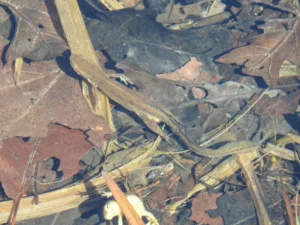
Disease can still spread, and you might not notice problems until it’s too late.
Most backyard ponds aren’t big enough to really work for mixed-species habitats.
Unless you have a massive pond with excellent filtration and lots of plants, you’re better off picking one species and creating a perfect home for it.
What Do Experts Recommend?
Most amphibian experts and experienced keepers say the same thing: don’t mix species. The risks outweigh any benefits.
Research on amphibian care shows animals do better when kept with their own kind or alone, depending on the species.
If you want variety, set up multiple tanks. You can have a newt tank and a frog tank right next to each other.
This lets you enjoy both animals without putting either one at risk.
Some people succeed at keeping mixed-species tanks, but they’re usually experienced keepers with large setups and careful monitoring.
If you’re new to amphibians, starting with a mixed tank is asking for trouble.
Conclusion
Newts and frogs can technically live together, but they shouldn’t. The combination creates too many problems, different environmental needs, disease risks, food competition, and constant stress for both animals.
What looks peaceful on the surface might be slowly harming your pets.
Even if they don’t fight, the stress of living together weakens their immune systems and shortens their lives.
Give each species its own tank with the right conditions, and both will be healthier and happier.
It’s more work and more expense up front, but it saves you heartbreak and vet bills later.
Hi, my name is Ezra Mushala, i have been interested animals all my life. I am the main author and editor here at snakeinformer.com.

